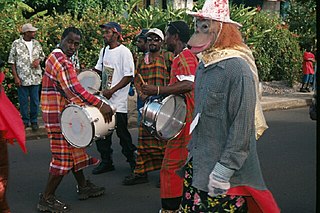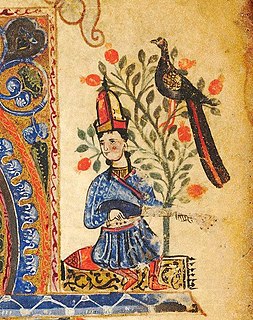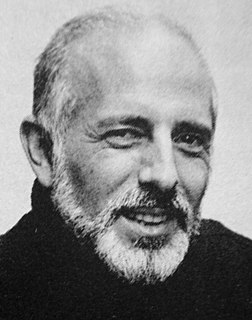Related Research Articles
Makossa is a Cameroonian style of urban music. Like much other late 20th century music of Sub-Saharan Africa, it uses strong electric bass rhythms and prominent brass. In the 1980s makossa had a wave of mainstream success across Africa and to a lesser extent abroad.

The balafon is a gourd-resonated xylophone, a type of struck idiophone. It is closely associated with the neighbouring Mandé, Senoufo and Gur peoples of West Africa, particularly the Guinean branch of the Mandinka ethnic group, but is now found across West Africa from Guinea to Mali. Its common name, balafon, is likely a European coinage combining its Mandinka name bala with the word fôn 'to speak' or the Greek root phono.
The music of Louisiana can be divided into three general regions: rural south Louisiana, home to Creole Zydeco and Old French, New Orleans, and north Louisiana. The region in and around Greater New Orleans has a unique musical heritage tied to Dixieland jazz, blues, and Afro-Caribbean rhythms. The music of the northern portion of the state starting at Baton Rouge and reaching Shreveport has similarities to that of the rest of the US South.

The music of the Cameroon includes diverse traditional and modern musical genres. The best-known contemporary genre is makossa, a popular style that has gained fans across Africa, and its related dance craze bikutsi.

The music of Dominica includes a variety of genres including all the popular genres of the world. Popular music is widespread, with a number of native Dominican performers gaining national fame in imported genres such as calypso, reggae, soca, kompa, zouk and rock and roll. Dominica's own popular music industry has created a form called bouyon, which combines elements from several styles and has achieved a wide fanbase in Dominica. Groups include WCK, Native musicians in various forms, such as reggae, kadans (Ophelia Marie, and calypso, have also become stars at home and abroad.
The most distinctive music of Uruguay is to be found in the tango and candombe; both genres have been recognized by UNESCO as an Intangible Cultural Heritage of Humanity. Uruguayan music includes a number of local musical forms such as murga, a form of musical theatre, and milonga, a folk guitar and song form deriving from Spanish and italian traditions and related to similar forms found in many American countries.

Emmanuel N'Djoké "Manu" Dibango was a Cameroonian musician and songwriter who played saxophone and vibraphone. He developed a musical style fusing jazz, funk, and traditional Cameroonian music. His father was a member of the Yabassi ethnic group, while his mother was a Duala. He was best known for his 1972 single "Soul Makossa". He died from COVID-19 on 24 March 2020.
Themusic of Italy has traditionally been one of the cultural markers of Italian national and ethnic identity and holds an important position in society and in politics. Italian music innovation – in musical scale, harmony, notation, and theatre – enabled the development of opera, in the late 16th century, and much of modern European classical music – such as the symphony and concerto – ranges across a broad spectrum of opera and instrumental classical music and popular music drawn from both native and imported sources.
Music of Serbia represents the musical heritage of Serbia, both historical and modern. It has a variety of traditional music styles, which are part of the wider Balkan musical tradition, with its own distinctive sound and characteristics.

The music of Armenia has its origins in the Armenian Highlands, dating back to the 3rd millennium BCE, and is a long-standing musical tradition that encompasses diverse secular and religious, or sacred, music. Folk music was notably collected and transcribed by Komitas Vardapet, a prominent composer and musicologist, in the late nineteenth and early twentieth centuries, who is also considered the founder of the modern Armenian national school of music. Armenian music has been presented internationally by numerous artists, such as composers Aram Khachaturian, Alexander Arutiunian, Arno Babajanian, Haig Gudenian, and Karen Kavaleryan as well as by traditional performers such as duduk player Djivan Gasparyan.

Jerome Robbins was an American choreographer, director, dancer, and theater producer who worked in classical ballet, on stage, film, and television.

Joseph Athanase Tshamala Kabasele, popularly known as Le Grand Kallé, was a Congolese singer and bandleader, considered the father of modern Congolese music. He is best known for his role as leader of the band, Le Grand Kallé et l'African Jazz, in which capacity he was involved in a number of noted songs, including Indépendance Cha Cha.

Jack Cole was an American dancer, choreographer, and theatre director known as "the Father of Theatrical Jazz Dance".
Abdel Gadir Salim is a singer and bandleader of popular music from Sudan. He is one of the most well-known Sudanese singers in the West, having performed around the world and recorded in countries such as the United Kingdom and France.

Dance on Sunset is a dance and music series hosted by Quddus on Nickelodeon that featured dance routines, called the "Fresh-Squeezed Dance", designed to be performed by its preteen and teen-age viewers. Choreographer Tony Testa and the show's dance troupe, the Nick 6, demonstrated each routine slowly, repeating it several times during the episode. An "advanced" version of each routine was featured on the show's website. Episodes featured musical guests, which included Akon, Natasha Bedingfield, Miranda Cosgrove, Fall Out Boy, Fergie, Janet Jackson, Sean Kingston, Lil' Mama, Jesse McCartney, Menudo, Omarion, Panic! at the Disco and Ashlee Simpson, as well as dancing by a studio audience. The show premiered March 29, 2008, immediately after the 2008 Kids' Choice Awards. The name 'On Sunset' came from the production location Nickelodeon on Sunset on Sunset Boulevard in Hollywood. The show was cancelled due to low viewership. The series finale aired on June 21, 2008. The website has been discontinued & shut down as of December 21, 2017.
This article includes an overview of the major events and trends in popular music in the 1950s.
Njacko Backo is a musician, poet, writer, composer, performer, and choreographer from Cameroon. He was born in 1958 and raised in a very musical family. He spent most of his childhood in a village called Bazou in western Cameroon where he was introduced to music. Like most children in his village, he began playing percussion and making instruments. However, with his Grandmother's assistance, Njacko met with the elders of the village who taught him to play music. He studied drumming, kalimba, percussion, and an African harp called zaa koua.
For music from a year in the 1940s, go to 40 | 41 | 42 | 43 | 44 | 45 | 46 | 47 | 48 | 49
Shaun Evaristo is a Filipino-American professional dancer and choreographer and currently CEO of Movement Lifestyle, a management company for choreographers. Shaun has taught at dance institutions that are well known by other dancers; amongst those are the Urban Dance Camp in Germany, the Broadway Dance Center in Japan, and Beat Mix in Korea. He has performed for Omarion, High School Musical star Vanessa Hudgens and Justin Bieber, and has choreographed several dance routines for J. Lewis, NLT, Travis Garland, Luhan (singer) and for Korean groups Big Bang, 2NE1, Se7en, BTS, and Henry's 1st single, "Trap".Jeon Jungkook also stated that he worked with lifestyle movement before debut.